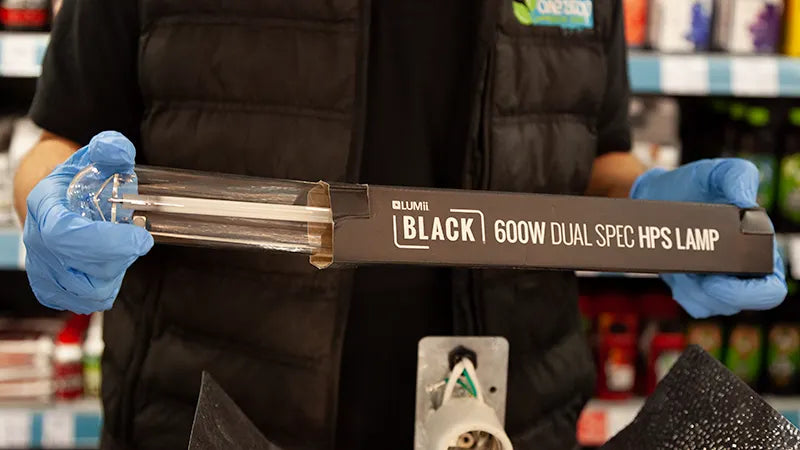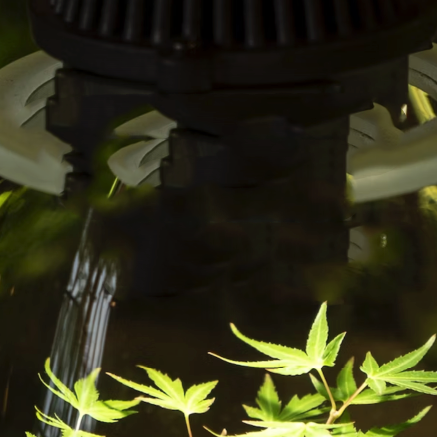When Should You Change your Grow Room Lamp?
Virtually all grow shops and hydroponics manufacturers will recommend that HPS (and other HID) lamps are changed out on a regular basis. But does this belief have its roots based in fact? And, actually after how long should an HPS lamp be replaced?
For this test, we took a 600 watt Gavita Pro lamp (400V) which had undergone just over 12 months of use as a flowering/fruiting light. In this application, the lamp was on for 12 hours a day and off for the other 12 hours. The lamp was never over or under driven, and ambient temperatures were reasonably normal & consistent at around 22-26 ºC. This is a fairly typical of a life for an HPS lamp. They are not very often used for more than 12 hours a day and even more rarely for less than that!
The Results
It was found that a brand new (but burned-in) Gavita Pro 600W lamp put down 830 µmol/m2/sec directly underneath the reflector set to a fixed height, while the 12 month old lamp put down just 764 µmol/m2/sec. This is a loss of 66 µmol/m2/sec, or a loss of 8%. This is a quite a lot.
In fact growers can do a calculation to see how much it will be costing them by using old lamps. Simply multiply the usual (or average) value of the crop (per light) by 0.08. If the resulting number is greater then the cost of a new lamp then it is a false economy to persevere with 12-month old lamps rather than change them out for new ones.
For example, let's say that the usual value of a crop under one 600 watt lamp is £3000.
So, £3000 x 0.08 = £240.00 (This is the loss per crop by using the 12-month old lamp)
Cost of replacing a top quality the lamp = £44.49
It easy to see that spending £44.49 to make an extra £240.00 per crop is a bit of a no-brainer!
We can at least say that science and observation would bear out the theory. Scientifically, we find that objects usually degrade when they are heated up and cooled down frequently. Frequent heating up and cooling down causes physical expansion and then contraction, and therefore causes mechanical stress. This accelerates the wear process considerably. HPS lamps are usually run for about 12 hours a day. That means for 12 hours they are at room temperature, and for the other 12 hours they are at several hundred degrees Centigrade. It's not really surprising that with the regular heating up and cooling back down again that they wear out.
Visible differences
In terms of observation, we have had countless customers who have told us how much noticeably brighter their grow lights are when they have changed out their bulbs. Of course, human perception of how bright a light is doesn't necessarily translate into greater PAR (the light that plants use to photosynthesise with). However, to most of us it would seem to be intuitive that it would.
Of course, it is not just the amount of light that alters over time, the regular firing up causes the salts and gases inside the lamp to change which causes the output spectrum to change for the worse too. As the bulk of the light output drifts away from the most efficient wavelengths for photosynthesis, so the amount of photosynthesis that is stimulated becomes reduced too.
See our full selection of grow room lamps here

